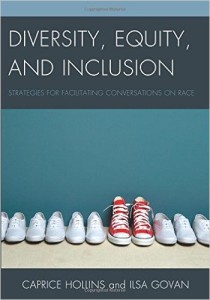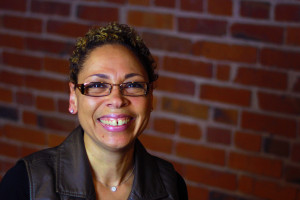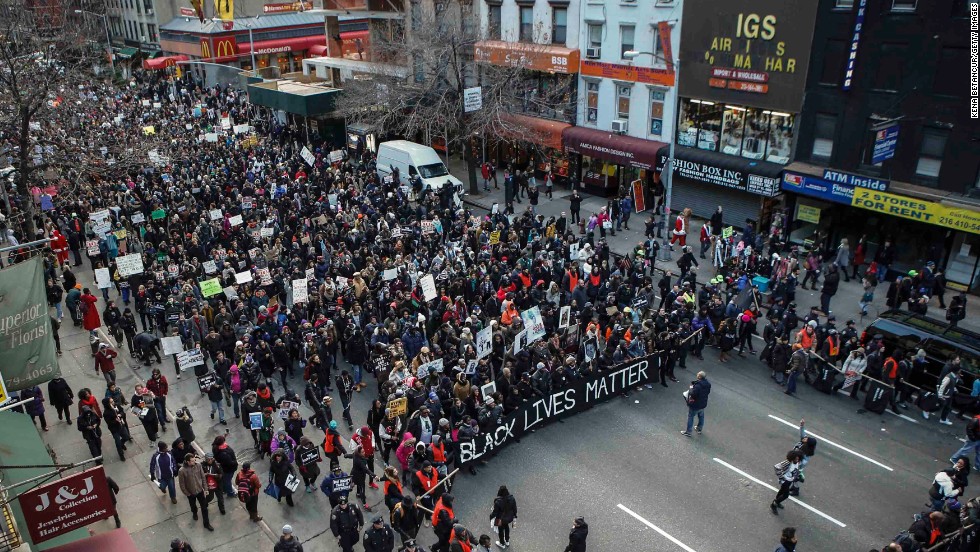Last year, Dr. Caprice Hollins, Assistant Professor of Counseling Psychology and Practicum Leader at The Seattle School, released a new book co-authored with her business partner, Ilsa Govan. Diversity, Equity, and Inclusion: Strategies for Facilitating Conversations on Race is intended for anyone who hopes to learn more about facilitating dialogue around racial differences and divisions in our culture. Here, we talk with Dr. Hollins about the book and the current state of the conversation in America, as well as how her faith and her time at The Seattle School has informed the work she does through Cultures Connecting.
 Can you tell us a bit about the new book?
Can you tell us a bit about the new book?
My business partner and I wrote it specifically for people who want to lead in this work and facilitate conversations about race with their colleagues—they want to become trainers. So, while people are buying it, and I’m getting lots of great feedback around it, it really is a specific audience.
When I was working at Seattle Public Schools, I wrote out some of the things I’ve learned and started doing one-on-one training for people to help facilitate, and then my partner and I started a training. It was full, there was a waitlist, and we saw wow, people are really wanting to figure this out. So it started out as a workbook, and then people were asking for it so much that we turned it into a self-published book. But even then it went with the workshop, it never served as a standalone. And then a publisher approached me after I wrote an article, and we spent some time filling in the blanks for people who aren’t going through the workshop and want to be able to read the book and then facilitate.
How have these conversations shifted? As you’ve been doing this work over the years, what kind of change and movement have you seen?
Something is happening in our country. I don’t know that I can pinpoint it, but I will say that every year my business has grown from the year before. I think this is going to be our eighth year in business, and every year has gotten better. And I know that, even with all my humanness and imperfection, that I and my business partner are phenomenal facilitators, and that gets us more work. But I also think that the reason we are so busy is because our nation is having conversations about race. Now I don’t think we’re doing it well—if you took Donald Trump for example, while I don’t like what he’s saying, and I don’t like the way he’s saying it, and I don’t like the hurt and harm in it, it still is creating dialogue.
Regardless of where you fit with Donald Trump, people are now talking about whether or not these things are okay to say, and what that might be like for Latinos to hear those things. It certainly is raising for some people, particularly white people, an awareness that racism isn’t gone.
You know, Black Lives Matter is another part—this is a movement. And even though I’m not okay with this whole response of “all lives matter,” and I think people miss the boat, and I think there are some things we could do differently in this conversation, it’s still raising conversation. It’s taking what has been underground, what people of color and white allies have been trying to say has always existed—that racism hasn’t gone away just because we don’t see lynching like we did during Jim Crow and slavery.
Racism hasn’t gone away just because we don’t see lynching like we did during Jim Crow and slavery.
As the conversation grows, it feels like we’re seeing more blatant defensiveness and opposition rise to the surface—like the dynamics might get harder before things get better. Does that feel true to you?
One hundred percent—yes, yes, yes. That’s what happens in these conversations. If they were easy, we would have had them a long time ago. That is part of the process. The thing is, and this is my assumption, but I don’t think the Donald Trumps of the world are going to critically reflect on “What is my defensiveness? What’s really going on here?” But many people do. Many people don’t, of course, but I think that many people do sit in the fire and try to work through it, as long as we can normalize and help people understand that that is a part of the process. Even the defensiveness and all of that tension that has risen, in my mind that isn’t a bad thing.
 Sitting in the fire and trying to work through it—that’s such daunting work.
Sitting in the fire and trying to work through it—that’s such daunting work.
One of the reasons the tension exists, and we don’t sit in the fire, is because the moment that you say something to me that I disagree with, I’ve already created a narrative around what I think your statement was about. Then I stop being genuinely curious about what your experiences have been, what you were taught growing up, what’s going on for you. The moment I lose genuine curiosity, I create the enemy image of you. And it is that enemy image that then causes us to go the other way.
The moment I lose genuine curiosity, I create the enemy image of you.
A big part of the work we do is we try to get people to be curious, to see one another as allies in the work, just in different places, for me to believe that you are a good, kind, loving human being, and that I need to try to stay with you in this. Both can be true: you can say something racist, and there can be all these good things about you. So how do I be curious with you rather than leaping to those assumptions? And it’s hard for me too—don’t let me make it look all beautiful, because it’s hard.
How has your time at The Seattle School, and the community here, affected the work you do outside of the school?
You know, I have taught at a lot of different places, and even when I was adjunct, The Seattle School was my favorite place to be. There’s something about the students, something about the culture of the school and the other professors, the work they do to get the students to be curious, to get the students to explore themselves, that makes my work easier in the Multicultural Perspectives class—and I do mean easier, not easy.
And The Seattle School did change my practice. If you would have taken my course several years ago, if you were a white student struggling with shame or discomfort and you would try to bring that to me, you might be weeping, you might be really wrestling with it, essentially my attitude was, “Well, now you know how people of color feel.” There was—I won’t say no empathy, but there was less empathy. That isn’t to say that the class didn’t have an impact, or it wasn’t powerful, but there was something different about the way in which I taught, where I wasn’t really seeing students’ own brokenness. I wasn’t seeing that the white students come with their own hurt and pain. Intellectually, I could understand—I know people come from alcoholism and abuse, but I really had very little empathy for that. “We are talking about race, and people of color are uncomfortable all the time, and they have to put up with a lot, and I’m not taking care of you!”
So when I started teaching Practicum, and hearing the students’ stories, oh my goodness—I mean it really shifted the way I teach. I still don’t feel like I take care of the white students in the class, I don’t think that’s part of the work, meaning I don’t try to fix it for them when they’re feeling uncomfortable, but there’s something about the way I see those students in the classroom now, very differently. That translates to my work in my workshops. I’m very clear about that shift and where that came from.
There’s something compelling about the idea that the Practicum process, for all of its messiness, can have such a deep impact on the instructors as well as the students.
And the importance of story, right? That’s what our school is so much centered around—the story of the students made it less about, “You’re just a white male student coming from Alabama, I already know your story.” Oh my goodness, there are so many stories I don’t know. So it’s helped me to be more curious in my workshops, and it’s helped me to meet people where they’re at, and to wonder what else might be going on with them, in a way that I didn’t before—or not as much, not as intentionally.
How does your faith in God shape how you approach this work?
I think that everything that I do, particularly as it relates to equity and social justice, is all God’s work. I totally, one hundred percent believe that. I believe that my role is to be an instrument for Him in helping to make our world a better place for people to live and be.
Everything that I do, particularly as it relates to equity and social justice, is all God’s work.
You know, I have a strong ego—I like myself a lot. So always my fear is myself getting in the way, like my own need to be liked, my own need to be seen in a certain way. I have to stay grounded constantly in reminding myself that this is not my work, this is God’s work. I’m just the messenger of it. So I pray before I go into a workshop. And I always hope, as I go into places that are not Christian environments, that people see God in me whether they believe in God or not. So even if I’m pushing someone or challenging someone, or getting really tense and heated, or I’m offending or I made a mistake—whatever is happening in that moment, I hope that they see God in me.
When I’m doing a workshop, they don’t have to know that God is amongst us! I can’t always say that explicitly, but God is amongst us.
Image courtesy of CNN.com.

